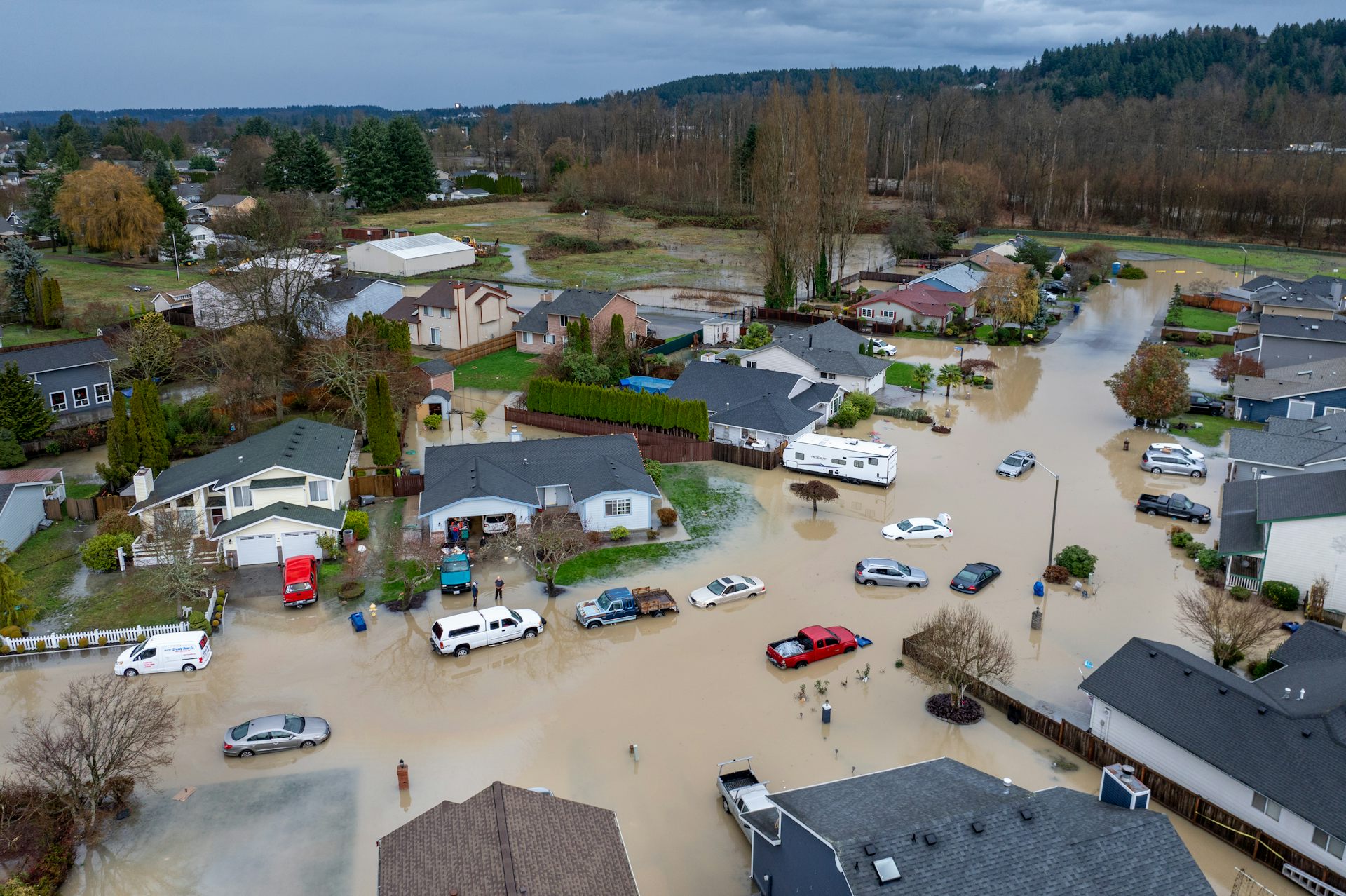Rural women are at a higher risk of violence − and less likely to get help
Research shows that rural women in the US are more likely to be killed by their current or former male partners compared to their urban and suburban counterparts.

I have been teaching a course on rural criminology since 2014, and most of my students are surprised by the information on violence against women presented to them.
Due to the lack of media attention to rural areas, my students come to class with the impression that all countrysides and small towns are safer than urban and suburban locales. In reality, rates of violent crime are often higher in many rural communities, and at times there’s even more silence around it.
Nearly 50 years of research shows that male violence against women knows no geographical or demographic boundaries. It occurs among all socioeconomic groups and in almost all communities, regardless of their size and location. Yet, crime in rural and remote places is reported to the police at lower rates than in urban areas.
Most criminology scholars do not study violence of any type in rural communities, which partly contributes to the widespread belief that rural women are safer than their urban and suburban counterparts. Media reporting also overlooks brutal forms of violence perpetrated by men in intimate relationships with women.
Hidden in plain sight
Janet, from rural southeast Ohio, whom I interviewed along with sociologist Martin Schwartz in 2003, like some other women in this region we talked to, was beaten by her husband after going through brutal degradation:
“He wanted sex … or with his buddies or made me have sex with a friend of his. … He tied me up so I could watch him have sex with a 13-year-old girl. And then he ended up going to prison for it.”
Janet is by no means an outlier. I analyzed aggregate 1992 to 2005 National Crime Victimization Survey data along with criminologists Callie M. Rennison and Molly Dragiewicz. This data conclusively shows that rural women across the U.S. report physical and sexual violence at higher rates than those in more densely populated areas.
Research also shows that rural women in the U.S. are more likely to be killed by their current or former male partners compared to their urban and suburban counterparts. A study looking at data from 2005 to 2017 across 16 states, for example, found that female homicide rates are higher in rural places.
Another rural Ohio woman told Schwartz and me about the violence she suffered in her relationship: “He’d come home and pull a double barrel and cock both barrels and said he was going to kill me. And it was like, wait a minute here, you know, it was two o’clock in the morning.”
Why are rural women at higher risk?
Research conducted since 1988 has identified several reasons for rural women being at higher risk of violence compared to those living in urban and suburban places. These include geographic and social isolation, widespread acceptance of violence against women, and community norms prohibiting women from seeking social support. What makes it even worse is the absence of effective social support services and the higher rates of gun ownership.

Many social workers, for example, must travel vast distances to reach rural battered women, often at their own expense. What is more, rural abusers “feed off” their female partners’ isolation.
As a woman Schwartz and I interviewed from Meigs County, Ohio, told us, “I didn’t have a car. I wasn’t allowed to go anywhere.” Her husband, however, who had “plenty of cars,” disabled them to stop her from seeking freedom and independence. “He taught me a lot about cars and I knew what parts I need. And there would be no spare. So, I couldn’t leave.”
In rural sections of Ohio and other states, as my research uncovered, there is common acceptance of abuse of women. In many rural areas, community norms often prohibit survivors from publicly talking about their experiences and from seeking help.
As one Appalachian woman put it: “I don’t sit around and share. I keep it to myself. Um, I, I believe that’s part of my mental illness. But I’m not one to sit around and talk about what’s happened.”
Jackie, another rural Ohio woman Schwartz and I interviewed, said that numerous women in her community suffer in silence: “It’s like we see, but we don’t. It’s like three monkeys: don’t see, don’t hear, don’t speak.”
Other women told similar stories of the unwillingness of people in their community to help them.
Gun ownership is a strong correlate of intimate partner violence in rural parts of the U.S.: In rural areas, 46% of adults own guns compared to 19% in urban places. Moreover, firearms are used in 54% of all rural domestic homicides.
What Neil Websdale, director of Arizona State University’s Family Violence Center, stated nearly 30 years ago still holds:
“Rural culture, with its acceptance of firearms for hunting and self-protection, may include a code among certain men that accepts the casual use of firearms to intimidate wives and intimate partners. In urban areas, it is more difficult for abusers to discharge their weapons and go undetected. People in the country are more familiar with the sound of gunshots and often attribute the sound to legitimate uses such as hunting.”
Gun ownership can create safety concerns for social workers, many of whom work alone.
Pathways to prevention
One, albeit highly controversial, prevention strategy is banning the possession, purchase, sale and transfer of handguns, which are the weapons men use the most to kill women regardless of where they live. That would greatly reduce the rate of male-to-female homicide in rural places, as it would in more densely populated areas.
For example, it is estimated that 38% fewer women are shot to death by intimate male partners in states where background checks are required for all handgun owners.
Similarly, the federal Violence Against Women Act includes provisions that, when an order of protection – also referred to as a restraining order – is granted, it leads to the person being restrained losing any gun permits or permission to keep guns at home.
This, in turn, leads to a reduction in intimate femicide. A number of states have gone further than the federal law, extending gun possession bans to people under temporary – not just permanent – restraining orders. Such bans have further reduced intimate partner homicide, by a best estimate of 14%.
Libraries as safe spaces
Rural libraries have proven to be a vital resource in the struggle to end interpersonal forms of abuse of women. They are more accessible in many U.S. rural communities than are shelters, public transportation and other services.
Rural librarians can direct survivors to legal assistance and domestic violence service websites, help find books and pamphlets that are useful for survivors, and provide programming for survivors’ children if survivors need time to think about their options.
The librarian could also help survivors travel from the library to the nearest shelter and work with the police to provide transportation assistance. Moreover, the librarian could help connect survivors with shelter workers via telephone and arrange for the arrival of survivors and their children at a shelter.
We are starting to see attorneys offering survivors legal advice in rural public libraries and providing libraries with information kiosks that include materials on legal issues related to the abuse of women.
A word of caution, though, is necessary. Libraries and other places that offer services to abused rural women require architectural changes that preclude people from hearing survivors talk about their violent experiences.
The chances that people might overhear survivors talking is much greater in smaller communities and hence more likely to jeopardize the safety of survivors and their children.
A multipronged strategy is always necessary. For example, some experts in the field call for setting up women’s police stations and safe houses in rural areas. They also recommend getting rural men to participate in anti-violence and anti-sexist community-based activities, such as holding town hall meetings to raise awareness about violence against women.
All too often, people think of ending violence as an event simple enough to fit on a bumper sticker or the side of a coffee mug. Just leave, and then it will be over.
Unfortunately, for a large number of women and children, particularly in rural areas, leaving and ending up in a safe place is a complex, ongoing process, and for some women and children it is one that never ends.
Walter S. DeKeseredy receives funding from West Virginia University..
Read These Next
Oldest known cremation in Africa poses 9,500-year-old mystery about Stone Age hunter-gatherers
An ancient cremation would have been a community spectacle in a place returned to and reignited over…
West Coast levee failures show growing risks from America’s aging flood defenses
Levees protect more than 7 million buildings in the US today, yet they got a D-plus grade in 2025. A…
LA fires showed how much neighborliness matters for wildfire safety – schools can do much more to te
Managing fire risk is about more than regulations and rules. It’s also about caring for neighbors…






